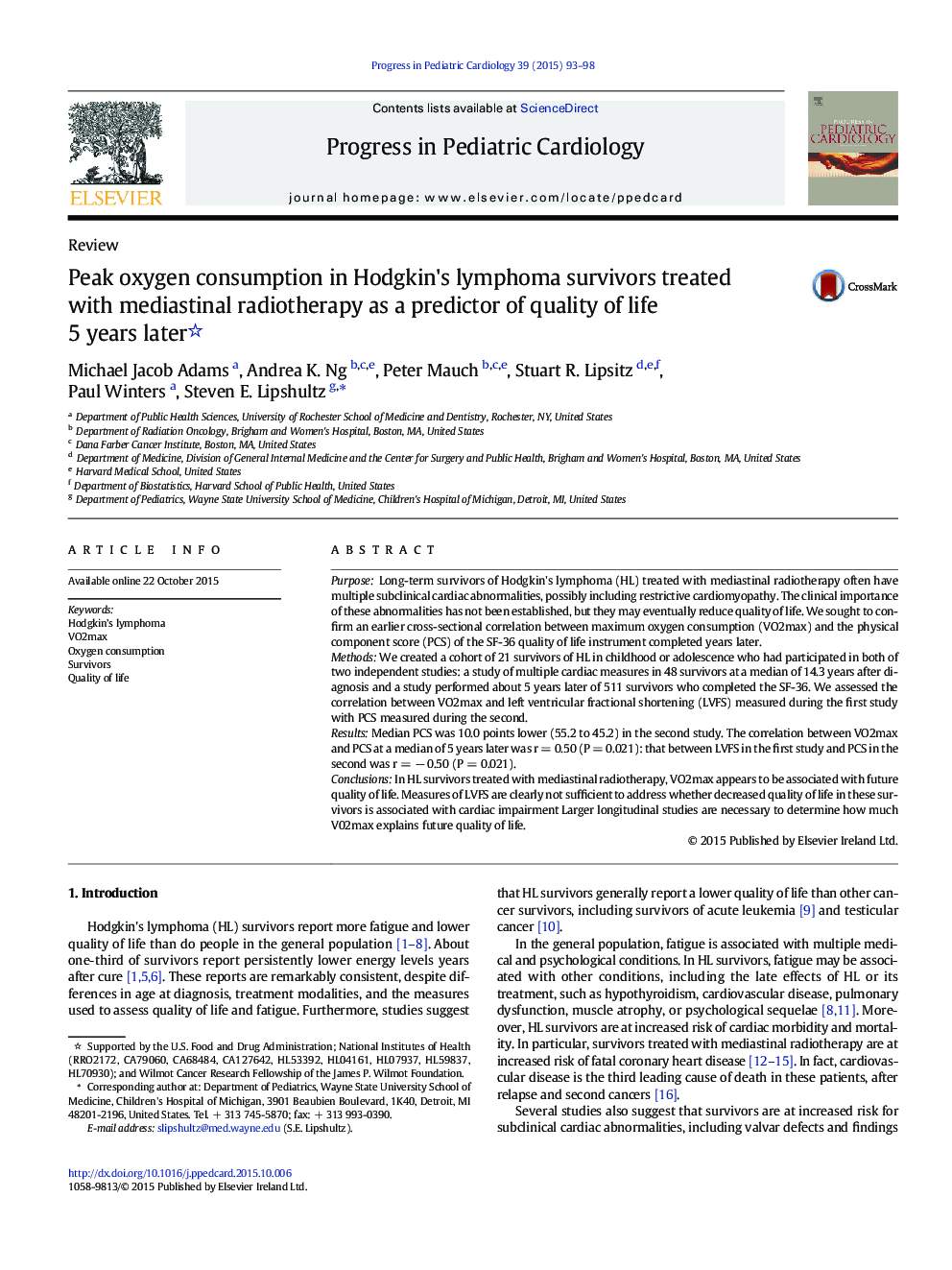| Article ID | Journal | Published Year | Pages | File Type |
|---|---|---|---|---|
| 5997038 | Progress in Pediatric Cardiology | 2015 | 6 Pages |
PurposeLong-term survivors of Hodgkin's lymphoma (HL) treated with mediastinal radiotherapy often have multiple subclinical cardiac abnormalities, possibly including restrictive cardiomyopathy. The clinical importance of these abnormalities has not been established, but they may eventually reduce quality of life. We sought to confirm an earlier cross-sectional correlation between maximum oxygen consumption (VO2max) and the physical component score (PCS) of the SF-36 quality of life instrument completed years later.MethodsWe created a cohort of 21 survivors of HL in childhood or adolescence who had participated in both of two independent studies: a study of multiple cardiac measures in 48 survivors at a median of 14.3 years after diagnosis and a study performed about 5 years later of 511 survivors who completed the SF-36. We assessed the correlation between VO2max and left ventricular fractional shortening (LVFS) measured during the first study with PCS measured during the second.ResultsMedian PCS was 10.0 points lower (55.2 to 45.2) in the second study. The correlation between VO2max and PCS at a median of 5 years later was r = 0.50 (P = 0.021): that between LVFS in the first study and PCS in the second was r = â 0.50 (P = 0.021).ConclusionsIn HL survivors treated with mediastinal radiotherapy, VO2max appears to be associated with future quality of life. Measures of LVFS are clearly not sufficient to address whether decreased quality of life in these survivors is associated with cardiac impairment Larger longitudinal studies are necessary to determine how much V02max explains future quality of life.
